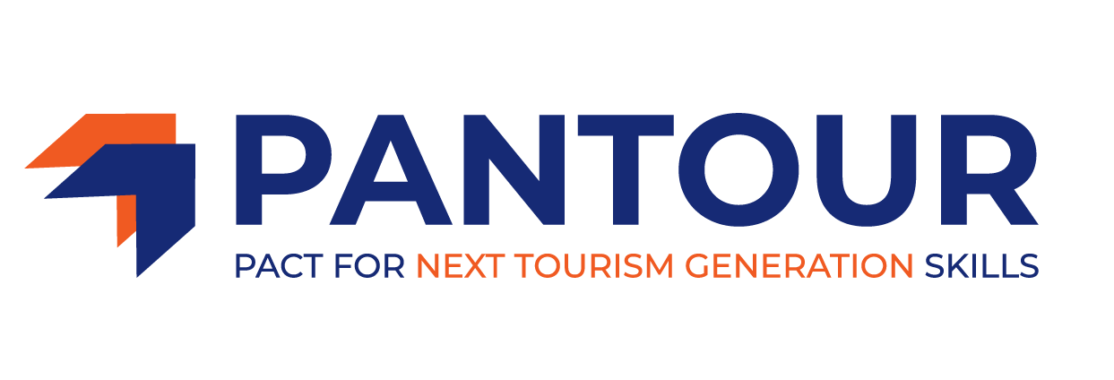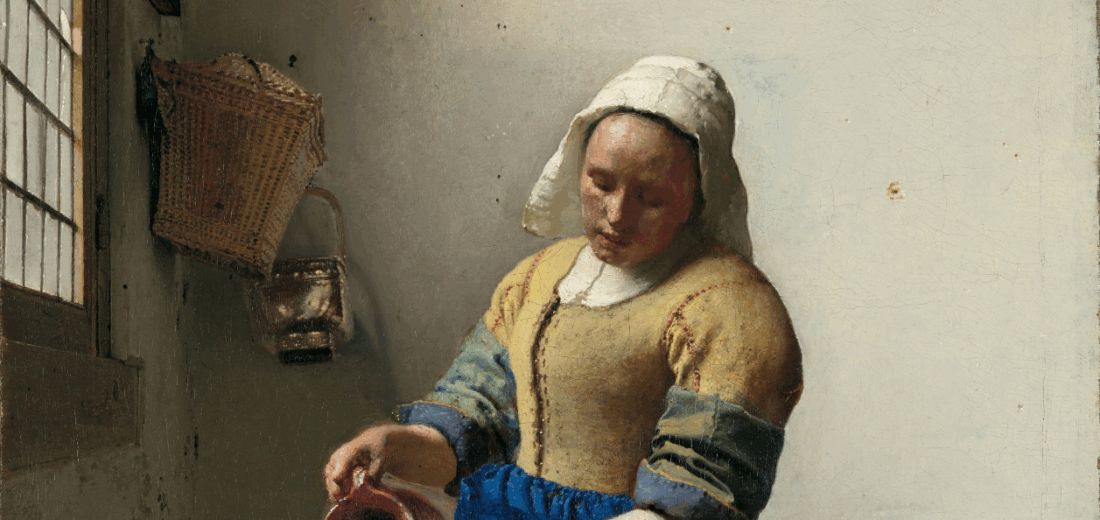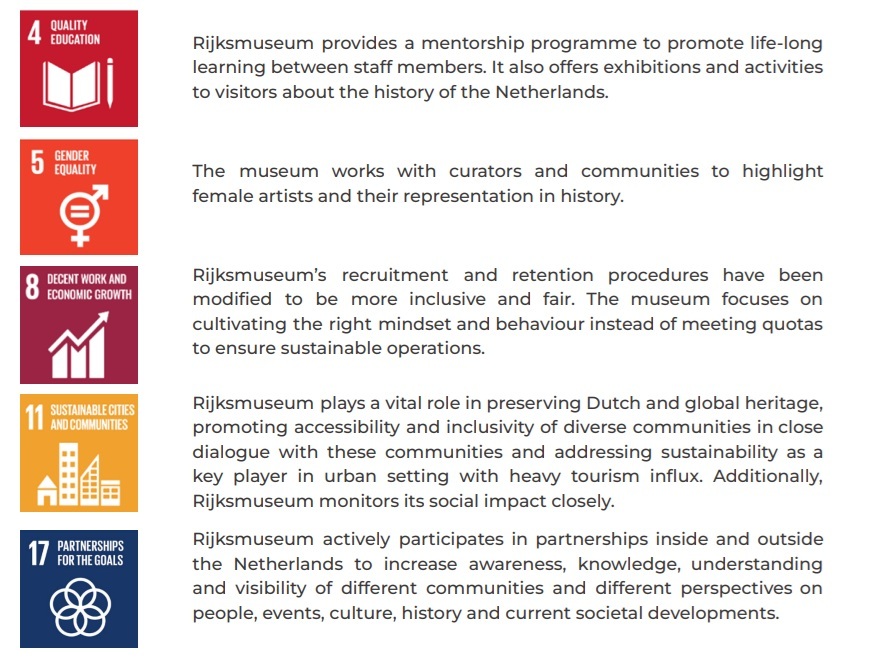Rijksmuseum, The Netherlands: a best practice for effective EDI initiatives
Header image: The Milkmaid (Rijksmuseum, Amsterdam)
The Rijksmuseum is the national museum of the Netherlands. With a collection of over 1 million objects, the museum tells the story of 800 years of Dutch history by displaying 8,000 objects at any given time including paintings, sculptures, and historical artifacts. The Rijksmuseum reopened in 2013 after a ten-year renovation. It currently employs approximately over 750 people.
Context
Rijksmuseum attracts a significant number of national and international visitors which is why diversity and inclusion is considered crucial. For example, staff need cultural competences such as being able to communicate in multiple languages and understand different national backgrounds, to provide a welcoming experience. Rijksmuseum has established several EDI initiatives with the aim of learning through different perspectives in the organisation. This encompasses practices related to physical and mental abilities, cultural diversity, accessibility, neurodiversity, inclusive leadership and equitable recruitment practices. The museum has gathered all separate EDI related initiatives into one structured policy which is firmly embedded into the organisation’s overall strategy. This has been operationalised in the museum’s governance structure which includes a steering group consisting of department heads, a director and the diversity and inclusion manager, and an employees’ ambassador group represented by various departments and perspectives that provide feedback on inclusion and social safety. The presence from this wide range of internal stakeholders ensures that EDI is a joint effort to keep the topic on the collective agenda.
Implementation
In 2017-2018, the Vrije Universiteit VU Amsterdam conducted a baseline measurement to provide a foundation for EDI related practices with the aim of adopting an integrated learning approach to remain innovative and flexible, not only internally but also in the face of societal developments. Additionally, it aimed to integrate different perspectives into the museum’s offerings and structure. To further advance EDI efforts, the Rijksmuseum crafted the Diversity & Inclusion Manager role in 2019. Rijksmuseum started by developing practices in relation to cultural diversity. A structured and standardised hiring process was implemented to ensure inclusive recruitment practices. The museum has shifted away from meeting quantitative targets in recruitment and retention of minority groups to a qualitative approach that focuses on embedding an inclusive mindset and behaviours. In addition, importance was given to training department heads and managers on inclusive leadership. Public-facing staff were also trained in ‘hostmanship’ to improve skills related to public interaction. In 2022, a mentorship programme was formulated to foster cross-departmental education while supporting a learning culture aligned with the organisation’s goals, a safe environment and a sense of belonging.
The museum also hired an Accessibility Manager to support the integration of people with different physical abilities through various programmes. Additionally, improvements were made to the building to include accessible offices and exhibition spaces. Since 2024, neurodiversity has been added to the EDI agenda to develop policies around this diversity component. Recently, the Rijksmuseum has collaborated with guest curators and experts, including community representatives, to identify ways to be more inclusive in its collections. For example, the museum has organised expositions highlighting female painters, colonial and slavery history of the Netherlands and provenance research on objects obtained during the colonial era or World War II. To further incorporate diversity, the museum has partnered with different communities. For example, the Rijksmuseum offers activities to celebrate Keti Koti (Broken Chain in Sranantongo), a commemoration of the abolition of slavery in Suriname and former Dutch Caribbean colonies. Additionally, the museum hosts activities related to Amsterdam Pride, an annual celebration of the LGBTIQ+ community to strive for emancipation, social, societal and legal equality and acceptance, are also offered. Lastly, the museum has partnered with the Jewish community to commemorate the victims of World War II.
Enabling Factors
Enabling factors include strong support from top management to embed EDI into the overall strategy. An example is the adoption of the mentoring programme to cultivate life-long learning strategies. Additionally, Rijksmuseum follows a structured governance approach by integrating the Dutch Cultural and Creative sector’s four Ps of the Code Diversity & Inclusion: Programme, Public, Personnel and Partners. This systematic approach has enabled the museum to effectively develop EDI policies.
Barriers
The main constraint includes resistance to change. Altering the internal mindset and behaviours within the organisation requires time and the development of new dynamics between different departments.
Impact on the Organisation
Rijksmuseum has observed improvement in employee satisfaction and retention. An example is the positive feedback from both mentees and mentors participating in the mentorship programme. Learning opportunities for both mentees and mentors were actively created and career expectations for mentees became clearer. In addition, an internal dialogue on topics that impact the museum has been established. This has provided a better understanding of the different perspectives in the organisation. Visitors have also shown appreciation for these inclusive efforts. These initiatives do not only tie in with the museum’s role as a learning organisation but also opens the museums to different target groups and voices.
Quotes
‘You constantly have to get your topic on the agenda. You have to talk to people. You have to see if everything is happening. You have to be aware. It [diversity & inclusion] is not something that’s going to disappear.’
‘The more difficult part is to look at yourself as a leader or as a director and your own behaviour, or if you are role model and also if you are an inclusive leader. Do you ask your team for input or feedback or not? So, these are very difficult things and if you dive into that, then the organisation needs to be changed in all kinds of ways.’
Lessons Learned
Key lessons include the importance of a structured governance approach to embed EDI into the overall strategy and integrate it into all departments. A shift must be embraced to incorporate EDI into other organisations’ overall strategy and develop policies that align with their purpose. In addition, having joint responsibility and considering the perspectives from various departments and stakeholders is key. Finally, measuring progress is important for the sustainability of EDI.
Future Plans
Rijksmuseum will measure and monitor the effectiveness of their EDI initiatives. In addition, all job vacancies will be phrased in an inclusive way. Managers will also receive unconscious bias training. Regarding the public, the museum is developing activities to attract more diverse visitors such as youths, families with children, and less affluent people.
Links with UN Sustainable Development Goals
Read the full EDI report here.





No Comments